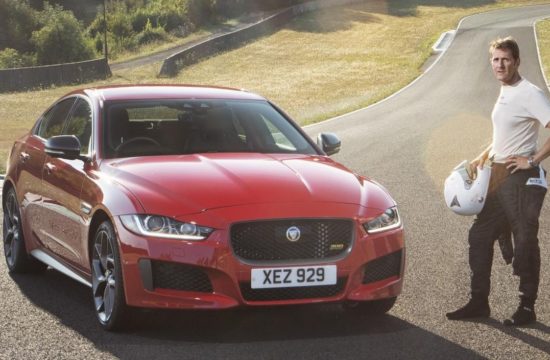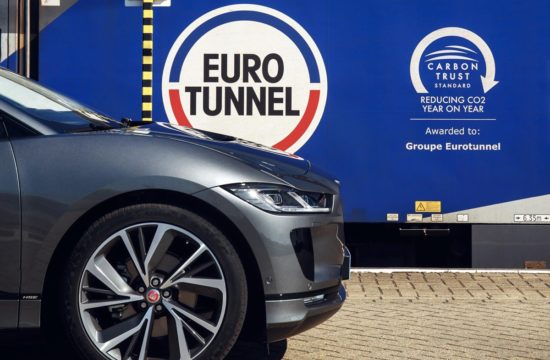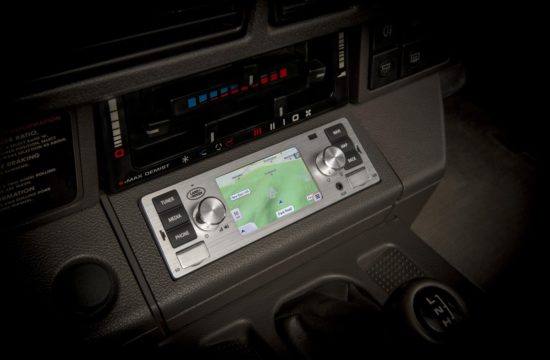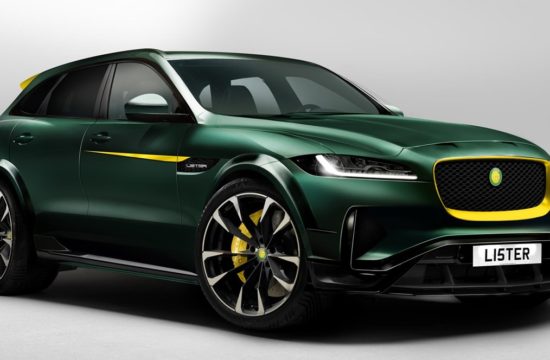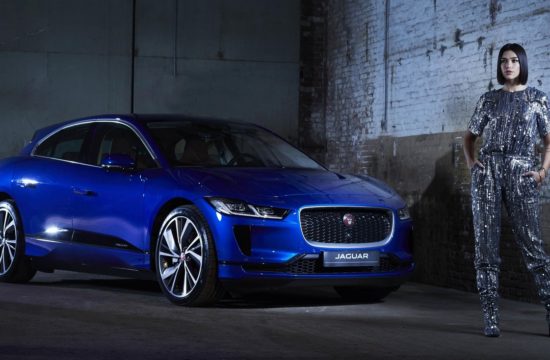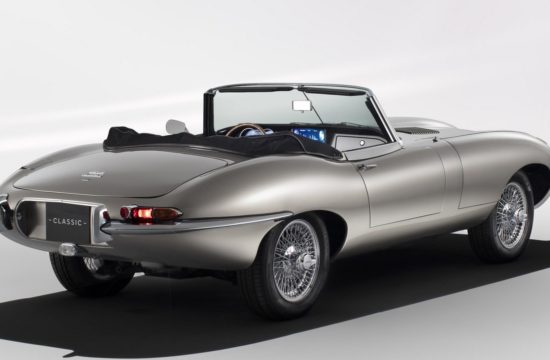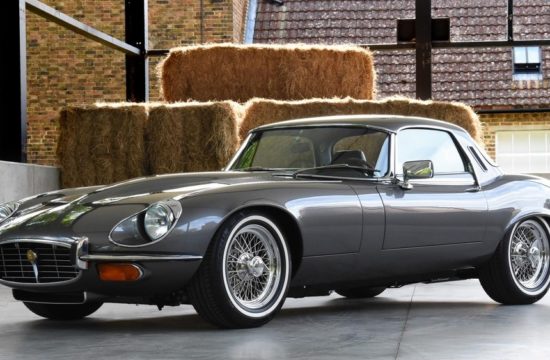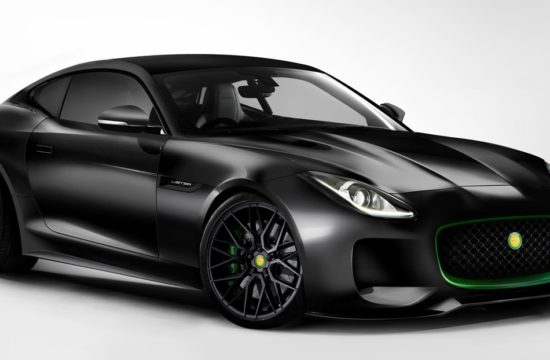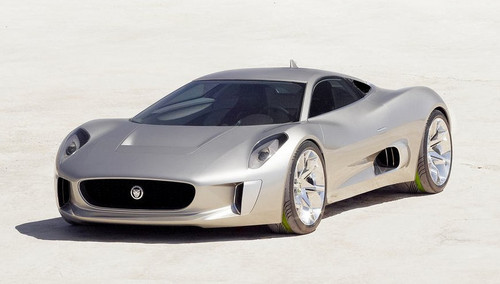
Jaguar kinda surprised everyone by revealing their promised concept car at the Paris Motor Show. We expected them to come up with something contemporary but they blown away all expectations by creating something really futuristic. It’s called the Jaguar C-X75 and it’s an all-wheel-drive range-extended supercar. It is absolutely stunning and hugely clever and sophisticated.
The C-X75 also showcases the firm’s new design language and celebrates 75 years of the marque and provide a glimpse into the future of Jaguar and its commitment to producing beautiful, fast cars powered by sustainable means. The car also pays homage to Jaguar’s traditional features, the body for example is finished in Jetstream Silver, getting inspiration from cars like the 1950s C-Type and D-Type racers and unique 1966 XJ13 Le Mans prototype.
But even more amazing than the looks is the great performance. four-wheel drive supercar is capable of running in purely electric (zero tailpipe emissions) mode for 110km (68 miles) on a six-hour domestic plug-in charge. It features a innovative, lightweight micro gas-turbines system that recharges the batteries giving the car a theoretical range of 900km (560 miles), spinning at 80,000 rpm and generating just 28 g/km of co2.
The car’s performance figures just boggles the mind! It sprints from 0-100km/h (62mph) in just 3.4 seconds and blistering acceleration from 80-145km/h (50-90mph) in just 2.3 seconds, and can reach a top speed of 330km/h (205mph). That’s because it’s got four powerful 145kW (195bhp) electric motors – one for each wheel – produce 780bhp and an astonishing total torque output of 1600Nm (1180lb ft).
Inside the cabin a new interface for the driver has also been created for the C-X75 using high-resolution TFT screens. Building on Jaguar’s 10-year expertise in touchscreen technology, the Jaguar Co-Pilot display in the centre console supports the driver in extracting the full potential of the C-X75 by seamlessly managing information.
The main driver information screen is housed within the instrument binnacle. Needles float on the periphery of the twin cowls and sweep round the outer edge to display the status and rpm of the two turbines. The design team combined designs from instrumentation in the new XJ saloon with those from fighter aircraft to create virtual 3D ‘gimbals’ around which the gauges wrap and rotate to provide status updates.
Check out the specs of the car after the pictures…
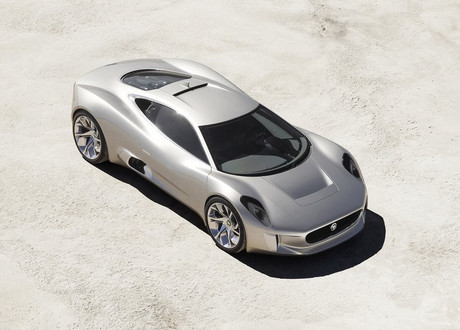
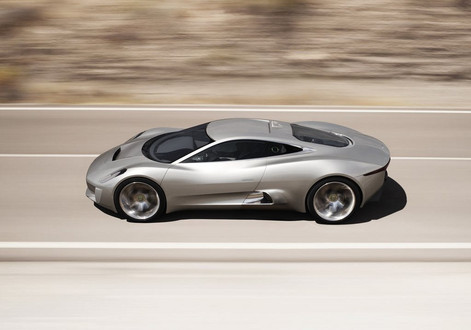
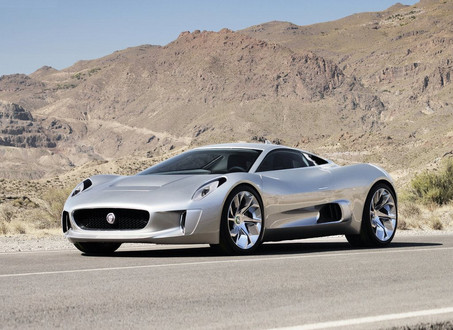
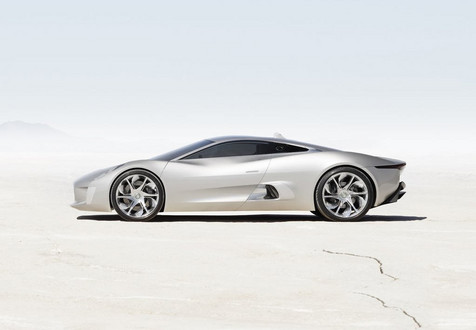
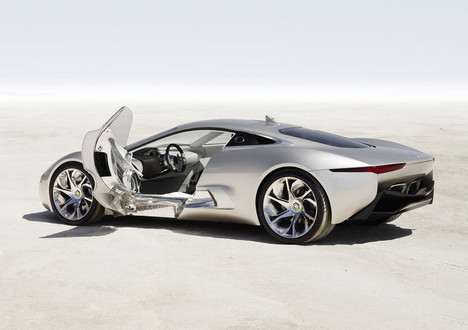
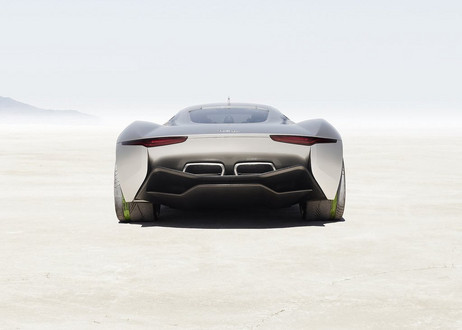
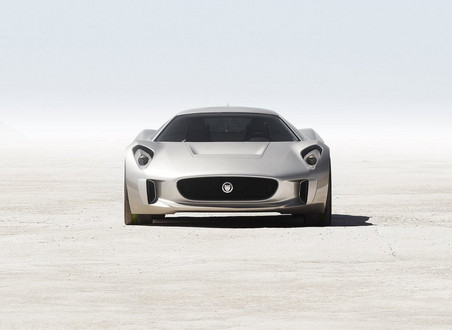
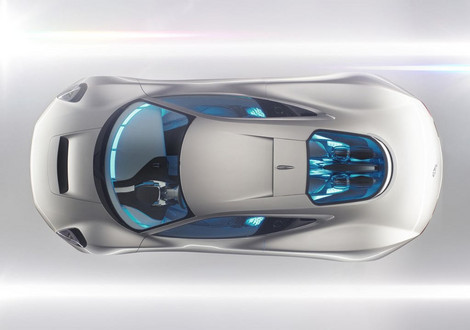
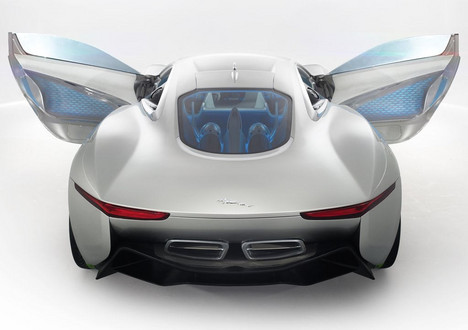
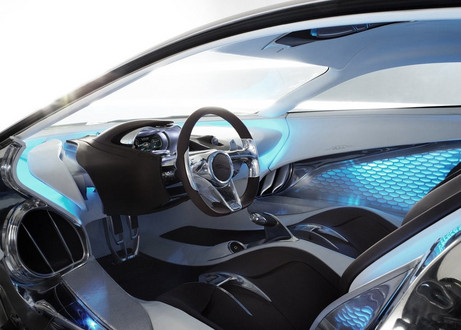
75 years of innovation
“Performance through innovation has always been a Jaguar trademark. From the beginning, cars such as the C-Type and D-Type pioneered aluminium construction, aerodynamic design, racing monocoques and disc brakes. The C-X75 demonstrates that Jaguar is still leading the field automotive design and technology. And will always continue to build beautiful, fast cars.”
Ralf Speth, Chief Executive Officer, Jaguar Land Rover
Advanced aluminium lightweight construction
Jaguar’s expertise in the use of aluminium stretches back more than 50 years to the first XK120s, through the lightweight E-Types, the XK and all-new 2010 XJ. It was with this latter creation that Jaguar fully realised the lightweight metal’s benefits to performance, agility, economy and sustainability in a luxury car.
The C-X75 naturally follows the same construction techniques with an extruded and bonded aerospace-inspired aluminium chassis clad in panels of the same material. Not only does this save weight, crucial in a car with an extreme performance envelope, but aluminium is one of the most easily recyclable metals available, boosting the C-X75’s sustainability as well as its speed.
Active Aerodynamics
Aerodynamics have always played a large part in Jaguar design with the late designer Malcolm Sayer elevating it into an art form in cars such as the XJ13, the prototype from which the C-X75 draws inspiration.
Jaguar has increased the design’s aerodynamic efficiency dramatically by opening the front grille and brake cooling vents only when necessary. At the rear corners of the car vertical control surfaces automatically engage at higher speeds to direct airflow aft of the rear wheels for increased stability and efficiency.
The carbon-fibre rear diffuser, a crucial element in guiding airflow under the car and creating downforce includes an active aerofoil, which is lowered automatically as speed increases. Vanes in the exhaust ports then alter the directional flow of the gases to further increase the effectiveness of the Venturi tunnel.
Technical Specifications
Propulsion System & Transmission Electric motor Four 145kW (195bhp) traction motors (580kW/780bhp total) Generator Two switched reluctance generators Range Extender power 2 x 70kW (94bhp) gas micro-turbines (140kW/188bhp total) Batteries Lithium-ion Total Battery Capacity (kWh) 19.6 Transmission Single-speed Final Drive Ratio 3.1:1
Performance 0-100km/h (seconds) 3.4 Top Speed (km/h/mph) 330/205 0-160km/h (seconds) 5.5 0-300km/h (seconds) 15.7 1/4 mile (seconds@km/h) 10.3@251 Max. Power (kW/BHP) 580/780 Max. Torque (Nm/lb ft) 1600/1180 Power to Weight ratio (BHP/tonne) 578 Aerodynamics (Cd) 0.32
Economy EV range (km/miles) 110/68 Extended range (km/miles) 900/560 CO2 emissions (g/km) 28 Fuel tank capacity (litres) 60
Dimensions Wheelbase (mm/inches) 2725/107.28 Overall Length (mm/inches) 4647/182.95 Overall width (mm/inches) 2020/79.52 Overall Height (mm/inches) 1204/47.40 Kerb weight (kg) 1350 Wheel size front and rear (inches) 21 and 22 Tyres (front and rear) 265/30 ZR21 and 365/25 ZR22 Battery weight (kg) 230

